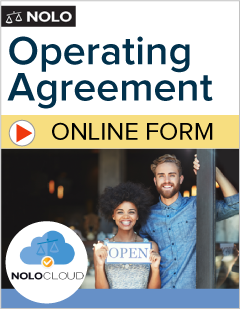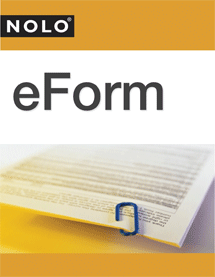Start your LLC off right. Learn about making an initial capital contribution to an SMLLC.
When establishing a new single-member limited liability company (SMLLC), you'll want to provide some kind of initial investment in the business. This type of pay-in is technically known as a "capital contribution." A capital contribution can come in many forms and is usually recommended, and often necessary, to start your SMLLC.
What Is a Capital Contribution?
As stated previously, a "capital contribution" is an initial investment into your SMLLC. Most often, a capital contribution will be in the form of cash—for example, you invest $5,000 of your personal savings in the new SMLLC. However, LLC laws allow for several different kinds of capital contributions, including:
- money
- property
- services; or
- a promise to contribute money, property, or services in the future.
Whatever you contribute—money, property, or services—becomes the property of the SMLLC.
An initial capital contribution is commonly seen as being given in exchange for membership in an LLC. However, while not typical, a person could contribute something to a company without being given membership, and a person could also be given membership without making any contribution.
Should You Make An Initial Contribution to Your SMLLC?
While most people do make an initial capital contribution, legally it isn't required. You could simply appoint yourself as the sole member of your SMLLC without making any initial investment.
However, you'd probably be taking a significant risk if you didn't invest at least a small amount at the outset. Without any capitalization, your business might not appear to be truly separate from you, personally. If you and your LLC aren't seen as separate entities, then you lose your limited liability protections.
In other words, without any initial contribution, if your business is responsible for someone being injured, or incurs a debt that it's unable to pay, a court might decide that your company suffered from inadequate capitalization. As a result, the court could allow someone with a claim against your business to "pierce the veil" of limited liability associated with your SMLLC, and go after you, personally, for restitution.
SMLLCs are particularly vulnerable to losing their limited liability status. Because one person is usually running an SMLLC, it can be difficult to differentiate between the actions of the business and the actions of the owner, the sole decision maker. Some states even distinguish an SMLLC from a multi-member LLC to distinguish the two business types' limited liability.
The first step to protecting your limited liability is forming an LLC (as opposed to a sole proprietorship). But forming an SMLLC is just one step in the continuous process to maintain your limited liability. Making an initial contribution to your SMLLC will help to establish your SMLLC as a separate entity and protect your limited liability status.
How to Make an Initial Contribution
As mentioned earlier, you can make an initial contribution to your SMLLC in the form of money, property, or services. Let's take a look at each scenario.
Contributing Money to Your SMLLC
Making a money contribution can be very simple: You write a check from your personal account and deposit it in your new business account. Moreover, you don't necessarily have to invest a large amount—for some very small businesses, a few hundred dollars might be plenty.
The main point is to pay enough money to meet your initial expenses. Then, going forward, it's important to keep enough capital in your business to meet your reasonable, ongoing expenses.
Contributing Property to Your SMLLC
Making a contribution in the form of property can be somewhat more complicated. The complications mainly relate to potential tax consequences. In most cases, a key issue will be determining the dollar value of the property or services contributed.
For example, suppose you contribute a piece of real estate you already own that's worth more than when you first acquired it. You'll need to know how much the value increased before you contributed it to your new company. Then, if you ever sell your membership—in effect, sell your company—you'll have to pay taxes on that amount of increased value.
Similar tax issues arise relating to property value if you take profits from your company within two years of the date that you contribute the property. The IRS can view the taking of profits in such cases as a disguised sale of the property. For further guidance on this point, you should consult with a tax professional.
Contributing Services to Your SMLLC
If you intend to contribute services in exchange for your membership, you'll need to record the value of those services on your company's balance sheet. In turn, you'll need to pay taxes on the value of those services, just as if you'd been paid for them as an employee.
Exchanging a Contribution for Membership
For any LLC, an initial contribution usually is exchanged for some portion of ownership in the new company. This ownership portion is called a "capital interest."
A member's capital interest is generally equal to the percentage of the company they own. While figuring out this percentage can sometimes be complicated in the case of multi-member LLCs, in the case of an SMLLC, the matter is straightforward: The single member clearly has a 100% capital interest in the company.
For detailed questions regarding tax implications of capital contributions, check out irs.gov or speak with a tax expert.



